#Bryn Mawr Film Institute
Text
by Shiryn Ghermezian
The Philly Palestine Coalition on Monday began a petition that demanded the cancellation of the film festival, which is co-sponsored by Israel Bonds, the Consulate General of Israel, and the Jewish Federation of Greater Pennsylvania. The pro-Palestinian group falsely claimed that Israel Bonds “finances the Israeli government’s budget” and “directly contributes to the displacement of Palestinians, the expansion of unlawful settlements, and unchecked settler violence.” The petition also falsely accused the state of Israel of genocide, apartheid, and occupation in its treatment of Palestinians living in the Gaza Strip.
According to the Israel Bonds website, proceeds from the sale of bonds have contributed to Israel’s growth in high-tech, cleantech, and biotech. Capital from Israel bonds have also “helped strengthen every aspect of Israel’s economy, enabling national infrastructure development … [and] expanded transportation networks enabled by investments in Israel bonds help facilitate shipment of ‘Made in Israel’ technology around the world, enhancing national export growth.”
Soon after facing pressure from the Philly Palestine Coalition, the BMFI announced on Monday it pulled the screening of The Child Within Me — a day before the scheduled event.
“Bryn Mawr Film Institute is not a political organization. We don’t endorse or oppose any causes,” the BMFI said in a released statement. “In past years, we have not regarded hosting a screening from the Israeli Film Festival as a political partnership or taking a stance on any issues. This was our feeling when we arranged the 2024 screening many months ago. However, as the situation in Israel and Gaza has developed, it has become clear that our showing this movie is being widely taken among individuals and institutions in our community as an endorsement of Israel’s recent and ongoing actions. This is not a statement we intended or wish to make.”
“BMFI is a safe place for civil and nuanced conversations about diverse stories,” the film institute added. “For the well-being and safety of all patrons, BMFI will not be a location for anger and violence. For those who wish to partake in an IFF screening, there are upcoming screenings at other venues.”
The Jewish Federation of Greater Philadelphia and the Anti-Defamation League’s chapter in Philadelphia were outraged by the move. They urged the BMFI to immediately reverse its decision to cancel the screening.
“Although BMFI states that this decision was made in an attempt to avoid controversy, this action only serves to blacklist Israeli culture, playing into the hands of antisemites who try to deny the Jewish people their voice and existence,” the two Jewish organizations said in a joint statement on Tuesday. “The IFF intentionally offers a multifaceted view of Israeli society. Each season, carefully curated feature films and documentaries provide glimpses into the intricate tapestry of Israeli life, allowing audiences to form their own informed opinions … Let us celebrate cultural diversity, promote dialogue, and recognize the transformative power of film in connecting us all.”
13 notes
·
View notes
Text
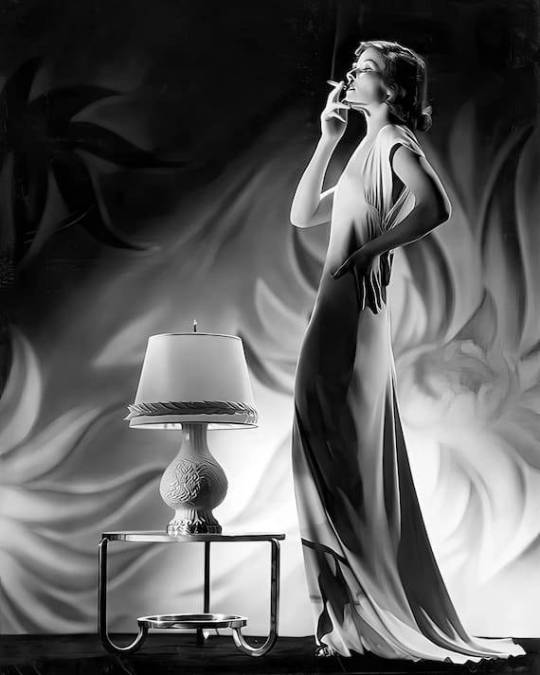
Katharine Hepburn
Katharine Houghton Hepburn (May 12, 1907 – June 29, 2003) was an American actress whose career as a Hollywood leading lady spanned six decades. She was known for her headstrong independence, spirited personality, and outspokenness, cultivating a screen persona that matched this public image, and regularly playing strong-willed, sophisticated women. She worked in a varied range of genres, from screwball comedy to literary drama, and earned her various accolades, including four Academy Awards for Best Actress—a record for any performer. In 1999, Hepburn was named the greatest female star of classic Hollywood cinema by the American Film Institute.
Raised in Connecticut by wealthy, progressive parents, Hepburn began to act while at Bryn Mawr College. Favorable reviews of her work on Broadway brought her to the attention of Hollywood. Her early years in film brought her international fame, including an Academy Award for Best Actress for her third film, Morning Glory (1933), but this was followed by a series of commercial failures culminating in the critically lauded box office failure Bringing Up Baby (1938). Hepburn masterminded her comeback, buying out her contract with RKO Radio Pictures and acquiring the film rights to The Philadelphia Story, which she sold on the condition that she be the star. That comedy film was a box office success and landed her a third Academy Award nomination. In the 1940s, she was contracted to Metro-Goldwyn-Mayer, where her career focused on an alliance with Spencer Tracy. The screen partnership spanned 26 years and produced nine films.
Hepburn challenged herself in the latter half of her life as she tackled Shakespearean stage productions and a range of literary roles. She found a niche playing mature, independent, and sometimes unmarried women such as in The African Queen (1951), a persona the public embraced. Hepburn received three more Academy Awards for her performances in Guess Who's Coming to Dinner (1967), The Lion in Winter (1968), and On Golden Pond (1981). In the 1970s, she began appearing in television films, which later became her focus. She made her final screen appearance at the age of 87. After a period of inactivity and ill health, Hepburn died in 2003 at the age of 96
39 notes
·
View notes
Note
katharine hepburn, if you havent already done her?
this entry seems to have been written while kate was still alive, so keep that in mind:
Survival alone might have enshrined Hepburn as one of the cinema’s greatest actresses, or characters. Add to that twelve Academy Award nominations and four Oscars, three of them when she was past sixty. She is so remarkable, she may have given the misleading impression that Hollywood is interested in old people. There was also the sentimental appeal of her long friendship offscreen (and the affectionate bantering on it) with Spencer Tracy.
She is no longer quite here (her health has been bad for several years), but it’s no wonder she is regarded with reverence. She has become an institution, claiming to be mystified that so many millions of strangers adore her. But she has avoided scandal and those eccentric flights of folly that beset so many elderly stars. When she came to do her autobiography, she took it for granted that we would know who Me was. The book was as brisk as a swim before breakfast, full of omissions and commissions, blissfully egocentric, and glowingly proud of her tomboy fondness for “strong” men like Tracy, George Stevens, John Ford, Howard Hughes, John Huston, and Louis B. Mayer (who never had a better champion). The book was bought by just about anyone who had two hours to read it. But maybe it changed Hepburn a little in our eyes. The vanity was breathtaking—from another age.
Hepburn was long regarded by Hollywood as an outsider, partly because she could not conceal her disdain or her healthy superiority. She did not work that much: after seventeen films in her first ten years, she made only twenty-one in the next thirty years. That sounds like discrimination, yet she made plenty of clinkers. It is likely that in the 1940s and 1950s she was hurt and perplexed that her best work so often confirmed her reputation as box-office poison. She smacked of class; her very voice rose above the mainstream, like a lace hem being lifted above mud. But there is something else: she had character, wit, intelligence, and moral being, and those things can seem cold and sexless on camera. She was most romantic when busy, doing things; not for her the passionate stillness of close-ups, rapt kissing, or worse. There are many women who like her just because she refused such “nonsense.” But the neglect had to do with her coldness, too. She is a true loner, someone who concentrates on herself.
The young Hepburn was a creature of enormous imaginative potency and showy breeding. It was said that she was not beautiful. Nonsense: she was ravishing despite thoroughbred features, a skinny body, and a deliberately, if not aggressively, emphasized Bryn Mawr accent. Her beauty grew out of her own belief in herself and from the viewer’s sense that she was living dangerously, exposing her own nerves and vulnerability along with her intelligence and sensibility. Like Jane Austen’s Emma Woodhouse, she was a moral being, sometimes at odds with herself, deluded or mistaken, but able to correct herself out of a grave and resilient honesty. Nobody on the screen could be so funny and so moving in making a fool of herself, or so touching in reclaiming her dignity. That is why screwball comedy seemed in her hands one of Hollywood’s most civilized forms and it is why Bringing Up Baby is so serious a film—without ever losing the status of being one of the funniest.
Her best work has not dated a fraction of an inch: from 1932 to 1945, she had it in her to be the most interesting, difficult, challenging woman in American pictures. Why? I’d guess it has to do with her confusion, for she loved movies while disapproving of them.
14 notes
·
View notes
Photo

Continuing our recent exploration into UGA’s film libraries over the years, here is a USG General Extension Film Service News Letter from May 1942 (v. 2, n. 4). I wanted to highlight it because one of the films listed in its “new films” section is “Emanuel Feuermann, Cellist,” a film we still have. I believe it is the only film made of Mr. Feuermann performing. Other archives have this film, and it was released on DVD in 2006.


In fact, we still have a lot of the films listed in this war issue, including a series of wartime training films issued by the U.S. Office of Education, about training people for shipbuilding, such as how to operate lathes, drills, and cutting tools. Also new that month was OUR NEIGHBORS DOWN THE ROAD, about South America. Our friends at NARA have a copy of that film online that you can watch here. We’re pleased to know now when these films arrived on campus.
The catalog was addressed to Louise Hollingsworth, then UGA’s Librarian.

Miss Hollingsworth was born in Athens in 1893. Her father was a professor at the Normal School in town (later the Naval Supply Corps School, and now UGA’s Health Sciences Campus). She graduated from the Lucy Cobb Institute and Bryn Mawr College (1913), then returned to Athens and taught Latin and German at Lucy Cobb. In the mid-1920s she became Assistant Librarian at UGA, and then the Librarian around 1927 until her death in 1955. She regularly shows up in the “Society” page of the Athens Banner newspaper where she was said to be vivacious and charming. She is often listed as traveling with her parents, going to the opera in Atlanta with friends, and editing a poetry book at UGA. She is buried with her parents in Athens’ Oconee Hill Cemetery.
The Hollingsworths lived on Prince Avenue in Athens, and I’d love to show you a photo of their house if it were still standing, but that block has been taken over by fast food chains, sadly.
7 notes
·
View notes
Text
Katharine Hepburn
https://www.unadonnalgiorno.it/katharine-hepburn/
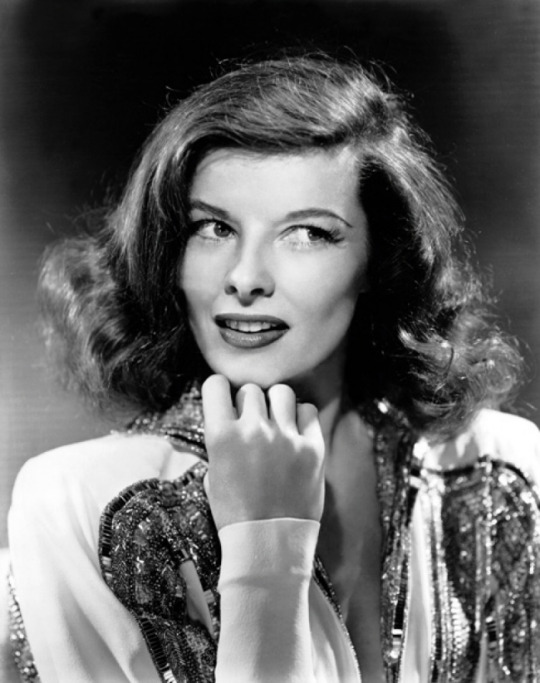
Recitare non è la cosa più importante. Importante è la vita: la nascita, l’amore, il dolore e infine la morte.
Katharine Hepburn, straordinaria attrice di cinema e teatro, è stata la diva più premiata di sempre.
Nel 1999 l’American Film Institute l’ha classificata al primo posto fra le più grandi star, ritenendola la più grande attrice di tutti i tempi.
Una carriera durata sessanta anni, dodici candidature agli Oscar di cui quattro vinti come miglior attrice protagonista per i film La gloria del mattino (1934) Indovina chi viene a cena? (1967), Il leone d’inverno (1968) e Sul lago dorato (1981).
Malgrado le numerose candidature e il record di premiazioni, si è vista una sola volta alla cerimonia degli Academy Awards nel 1974, per consegnare un premio alla memoria. Era già stata candidata undici volte e premiata tre: si presentò con giacca da camera, pantaloni e dolcevita in segno di protesta contro la finta patina che ricopre l’istituzione. Non è mai andata a ritirare un premio che aveva vinto.
Nacque a Hartford il 12 maggio 1907 in una famiglia benestante di idee molto liberali. Suo padre, Thomas Norval Hepburn, era un famoso urologo impegnato per l’informazione delle malattie veneree, allora ritenute un tabù. Sua madre era, Katherine Martha Houghton, suffragetta che aveva fondato Planned Parenthood, associazione per la promozione dell’aborto e della maternità responsabile e pianificata. Da bambina seguiva la madre nelle manifestazioni distribuendo palloncini con la scritta Il voto alle donne. Ha iniziato a recitare in tenera età, negli spettacoli femministi organizzati dalla genitrice.
Eccelleva in molti sport, soprattutto nel nuoto.
Ha trascorso un’infanzia felice, sino all’evento che ha condizionato il resto della sua vita causandole una forte depressione, ha trovato suo fratello impiccato. Ritiratasi in una cortina di dolore, per anni ha proseguito gli studi in casa. Ha poi studiato al Bryn Mawr College, in Pennsylvania, frequentato dai rampolli dell’alta società, dove si è distinta per l’atteggiamento ribelle e per il suo talento nella recitazione. Dopo la laurea in storia e filosofia, nel 1928, ha iniziato la sua carriera a teatro e sposato Ludlow Smith dal quale ha divorziato dopo poco.
Il debutto cinematografico è avvenuto nel 1932, con Febbre di vivere di George Cukor, regista con cui ha poi lavorato per lungo tempo.
Nel 1933 è stata protagonista in La falena d’argento, in cui interpretava un’aviatrice emancipata e ribelle, un personaggio che andava contro le regole tradizionali e ipocrite della società e che l’ha resa un’icona delle nuove generazioni.
È stata, negli anni ’30 del secolo scorso, il simbolo della ragazza moderna e spregiudicata, che apprezza le novità e le innovazioni di costume e tecnologia.
Salita alla ribalta in un periodo in cui le donne hanno iniziato ad avere un ruolo più incisivo nella società americana, con la sua spiccata personalità e la grande ironia, ne è stata un esempio lampante. Ha rappresentato un nuovo modello femminile, androgina, volitiva e affascinante che ha portato anche nella sua interpretazione di Jo in Piccole donne, sempre diretto da Cukor.
Nel 1942 ha conosciuto Spencer Tracy che, per venticinque anni, è stato il suo straordinario partner artistico e il grande amore della sua vita. Hanno recitato accanto in nove film, formando una delle coppie più amate e più in sintonia della storia del cinema.
Non abbandonando mai il teatro, è stata protagonista di numerose pellicole cinematografiche alcune molto fortunate, altre dei veri insuccessi.
Nel 1951 ha girato La regina d’Africa il suo primo film a colori accanto a Humphrey Bogart, sull’avventurosa e leggendaria lavorazione di quest’opera, nel 1984 ha scritto un libro intitolato La regina d’Africa: ovvero come sono finita in Africa con Bogart, Bacall e Huston e per poco non ho perso la ragione, diventato in breve tempo un best seller.
Quando Spencer Tracy si è ammalato, gli è rimasta accanto e smesso di lavorare. L’ultimo film che hanno girato insieme è stato il mitico Indovina chi viene a cena” che le è valso il secondo Oscar nel 1967. Poche settimane dopo la fine delle riprese l’attore è morto.
Successivamente, ha lavorato molto più per la televisione che per il cinema, nel 1976 ha anche vinto anche un Emmy, come miglior attrice protagonista per Amore tra le rovine, al fianco di Laurence Olivier. Dopo la straordinaria interpretazione in Sul lago dorato, accanto a Peter Fonda che le è valso il quarto Oscar, l’ultimo film in cui ha recitato è stato Love Affair – Un grande amore nel 1994, aveva 87 anni.
È morta all’età di 96 anni, il 29 giugno 2003, nella sua casa a Old Saybrook. In suo onore vennero oscurate per un’ora tutte le luci di Broadway, a ricordo della sua intensa attività teatrale. I suoi effetti personali, comprese foto, dipinti e un busto di Spencer Tracy che aveva scolpito personalmente, vennero messi all’asta da Sotheby’s e il ricavato della vendita, diversi milioni di dollari, è stato devoluto a parenti e amici.
La sua vita privata è stata sempre al centro dei gossip, grazie ai suoi flirt, veri o presunti, con uomini noti del mondo dello spettacolo e della finanza. Ma la sua relazione col collega Spencer Tracy è stata una delle storie più tormentate di Hollywood. Ventisei anni di amore segreto, perché lui non ha mai divorziato da sua moglie con cui aveva un figlio con un handicap. Solo negli ultimi tempi hanno vissuto insieme fino alla morte dell’attore.
Katharine Hepburn ha avuto una lunga carriera con tanti alti ma anche tanti insuccessi, tanto che, per vari anni, le malelingue di Hollywood l’avevano soprannominata Veleno per il botteghino.
Ha sempre avuto un rapporto difficile con la stampa e col pubblico invadente, rude e provocatoria, non rilasciava interviste e si negava alle richieste di autografi.
Nessun’altra stella è emersa con maggiore rapidità o con acclamazione più estatica. Nessun’altra stella è diventata così impopolare in maniera così rapida per tanto tempo. È stato scritto di lei.
Sempre attiva nel sociale, ha sostenuto molte battaglie civili, principalmente quella sulla pianificazione familiare. Nel 1985 ha anche ricevuto l’Humanist Arts Award.
Ha rappresentato un’esempio di donna dalla spiccata personalità che, sprezzante delle regole, ha vissuto come desiderava. Divorziata, senza figli e con tanti amori, dichiaratamente atea, è stata un’artista con grande potere contrattuale che non si è mai piegata alle convenzioni.
Grande icona di stile e eleganza, amava indossare pantaloni palazzo a vita alta, scarpe basse e camicie da uomo che hanno fatto epoca e dettato moda.
È stata una delle prime dive di Hollywood a mostrarsi invecchiata, senza nascondere le rughe e coi capelli argentati. Scelta agita soltanto da donne con una forte personalità e lei ne ha avuta da vendere.
0 notes
Video
Bryn Mawr Film Institute by Blick Calle
Via Flickr:
Lancaster Avenue near Morton Rd Bryn Mawr, Pennsylvania
#All Rights Reserved#Blick#Blick Calle#Blick Calle VFTS#Bryn Mawr#Bryn Mawr Film Institute#Calle#Copyright 2019#Echo in the Canyon#Lancaster Ave#Lancaster Avenue#Late Night#Pavarotti#Pennsylvania#Photography#StPhotographia#Street Photography#The Last Black Man In San Francisco#ViewFromTheStreet#amazing#brick building#brynmawrfilm.org#building#candid#cinema#classic#film#institute#street#theater
5 notes
·
View notes
Photo

Our film course, Art/Cinema III, investigates parallels between the making and study of art and film while gaining a greater understanding of the ways in which we approach creative works. This three-part course includes gallery visits and film clips that will enhance our discussion of photography, formalism, and documentary as represented in our collection and world cinema. Classes are Tuesday, March 6–20, from 1:00 to 4:00 p.m. in the main building. $125; $100 members and Bryn Mawr Film Institute members. Cost includes Museum admission. Taught in collaboration with Bryn Mawr Film Institute.
“The Clinch,” 1928, by Mabel Dwight
#art#art and cinema#cinema#art museum#museum#art history#history#film history#art history course#calendar of events#Philadelphia Museum of Art Library#Philadelphia Art Museum#Philadelphia#Philly art museum#Philly museum of art#open in Philly#The Clinch#Mabel Dwight#Bryn Mawr Film Institute
65 notes
·
View notes
Photo

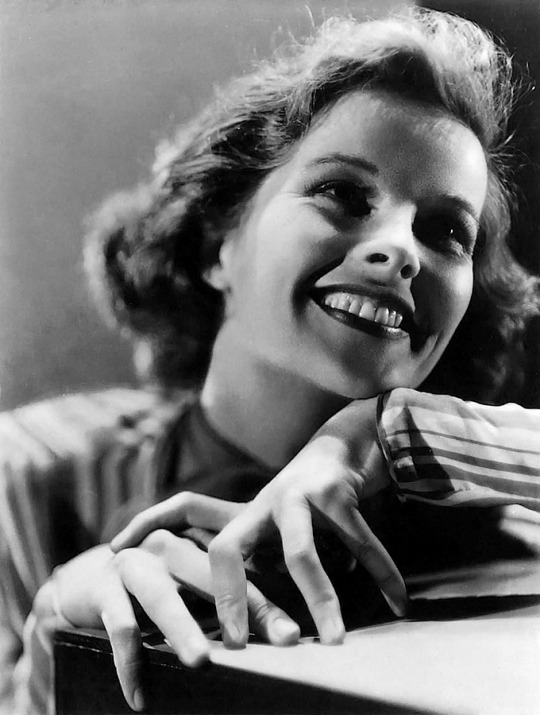
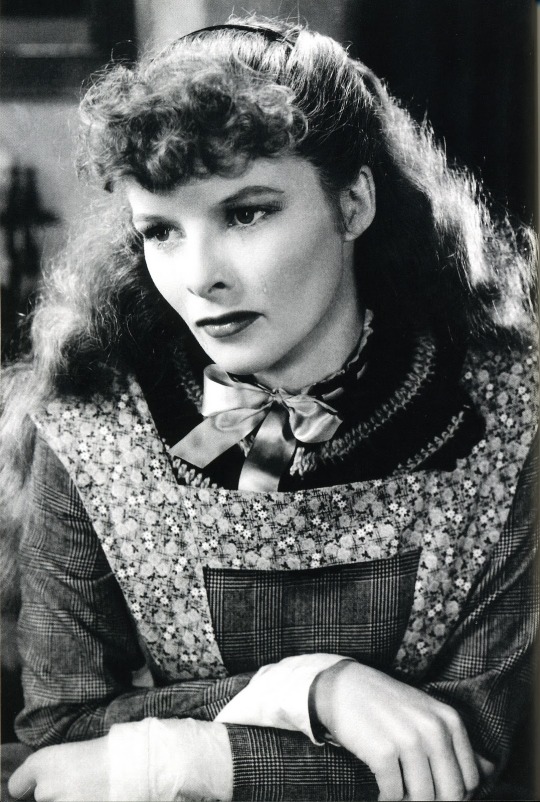

Katharine Hepburn Katharine Houghton Hepburn (May 12, 1907 – June 29, 2003) was an American actress who was a leading lady in Hollywood for more than 60 years. She appeared in a range of genres, from screwball comedy to literary drama, and she received a record (for any gender) four Academy Awards for Best Actress, plus eight further nominations. In 1999, Hepburn was named by the American Film Institute the greatest female star of Classic Hollywood Cinema. She was known for her fierce independence and spirited personality. Raised in Connecticut by wealthy, progressive parents, Hepburn began to act while studying at Bryn Mawr College. Favorable reviews of her work on Broadway brought her to the attention of Hollywood. Her early years in film were marked with success, including an Academy Award for Best Actress for her third picture, Morning Glory (1933), but this was followed by a series of commercial failures culminating in the critically lauded but commercially unsuccessful comedy Bringing Up Baby (1938), a pairing with Cary Grant. Hepburn masterminded her own comeback, buying out her contract with RKO Radio Pictures and acquiring the film rights to The Philadelphia Story, which she sold on the condition that she be the star. That comedy film, again co-starring Cary Grant, was a box office success and landed her a third Academy Award nomination, plus won her other co-star, James Stewart, his only Academy Award. Both movies are now considered among the greatest comedy films. https://en.wikipedia.org/wiki/Katharine_Hepburn
4 notes
·
View notes
Text
Final Project Update
This past weekend I started to work on my final project that looks at and compares different types of movie theaters in Philadelphia. I went to two different theaters this weekend: Bryn Mawr Film Institute (non-profit, community supported theater) and the Landmark Ritz Five (biggest theater chain for foreign and indie/arthouse movies). I took pictures of the outside, the lobby, and inside of the theater. My next step for this project is to go to one more theater (a big theater chain like AMC/Regal) and take pictures there. This is where I am at in my final project.
2 notes
·
View notes
Photo
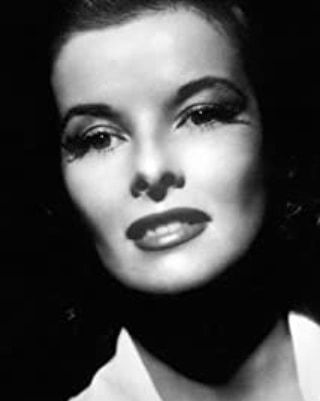
Hoy cumpliría años Katharine Hepburn (1907 -2003)fue una actriz estadounidense. Conocida por su fuerte independencia y personalidad enérgica, fue una primera actriz en Hollywood durante más de sesenta años. Intervino en una variedad de géneros que van desde la comedia alocada a dramas basados en obras literarias y recibió cuatro premios Óscar a la mejor actriz, un récord no superado por ningún intérprete hasta la fecha. Es uno de los grandes mitos femeninos de la historia del cine. En 1999, Hepburn fue nombrada por el American Film Institute como la mayor estrella femenina de la historia de Hollywood. Criada en Connecticut por padres reformistas y de clase alta, Hepburn comenzó a actuar mientras estudiaba en el Bryn Mawr College. Tras cuatro años en el teatro, las críticas favorables de su labor en Broadway llamaron la atención de Hollywood. Sus primeros años en la industria del cine estuvieron marcados por el éxito e incluso recibió un premio de la Academia por su tercera película, Morning Glory (1933), aunque a esta le siguieron una serie de fracasos comerciales que la llevaron a ser calificada como «veneno de taquilla» en 1938. Hepburn planeó su regreso al comprar la cancelación de parte de su contrato con RKO Radio Pictures y adquirir los derechos cinematográficos de The Philadelphia Story, que vendió a condición de ser la protagonista. En la década de 1940 fue contratada por la Metro-Goldwyn-Mayer, donde su carrera se centró en un dúo con Spencer Tracy. La asociación de ambos en pantalla siguió durante 25 años y produjo nueve películas. Hepburn se desafió en la segunda mitad de su vida cuando apareció regularmente en producciones teatrales de Shakespeare y abordó una amplia gama de papeles de obras literarias.[8] Encontró un lugar propio recreando a solteronas de mediana edad. como en The African Queen (1951), que tuvieron aceptación entre el público.[9] Recibió tres premios más de la Academia por su trabajo en Guess Who's Coming to Dinner (1967), The Lion in Winter (1968) y On Golden Pond (1981). #Collage #ProgramaCollage #cine #historiadelcine #maganzie #RevistaCollage (en Montevideo, Uruguay) https://www.instagram.com/p/COy7LE1gpRR/?igshid=1rj97scl6vgu0
0 notes
Photo

The only filter for today is on this photograph. #fleabag #truthbombs #nationaltheatrelive (at Bryn Mawr Film Institute) https://www.instagram.com/p/B86xQn-p11g/?igshid=jrbwjrw7osng
0 notes
Link
0 notes
Photo

Then a great movie marathon @brynmawrfilminstitute of Oscar nominated Short Film (Animated), and Short Film (Live Action) categories! (at Bryn Mawr Film Institute) https://www.instagram.com/p/B8NlQQwJksw/?igshid=19vip46guchhc
0 notes
Photo

Pain and Glory (Dolar y Gloria) review #painandglory #moviereviews #movies #spanishfilms #cannesfilmfestival2019 #dolorygloriafilm (at Bryn Mawr Film Institute) https://www.instagram.com/p/B4dWb0Rn23C/?igshid=dm267v5vzgh2
0 notes
